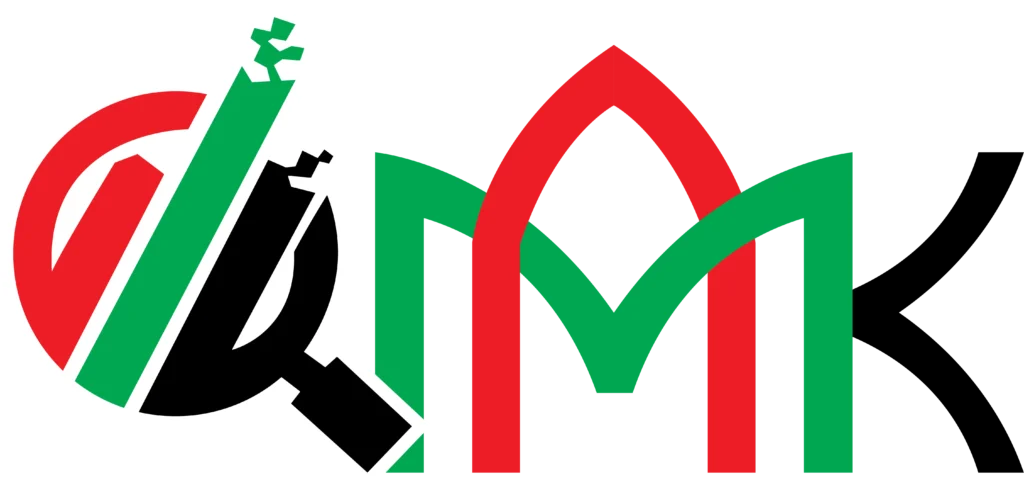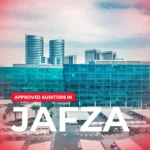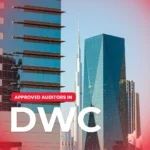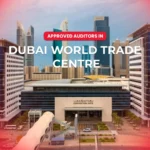DAFZ Industrial Park: Setup, Facilities, and Real Advantages
A simple overview of the park
Dubai builds hubs that connect trade with technology. Dubai Airport Freezone (DAFZ) stands near Dubai International Airport. The free zone serves companies that need speed with control. Inside this ecosystem sits DAFZ Industrial Park, a focused area for light industry and logistics. The free zone sets the rules and runs the portals. The industrial park gives the space and gives the utilities. This mix helps a company launch operations with less friction and with strong support.
A founder wants access to markets with short transit times. A supply lead wants bonded storage near air cargo. A finance head wants duty relief under clear processes. A team finds those needs inside this one district. You get modern units, bonded choices, and fast clearance. You also get digital systems and service desks that know the playbook.
Why the location matters for daily work
The park sits close to runways and to arterial roads. Trucks reach cargo gates in minutes. Freight moves from warehouse to aircraft with short dwell. The site links to Jebel Ali and to inland ports through highways. Buyers and vendors meet teams in a central city area. A short drive saves hours across a week. That time unlocks faster turns and tighter inventory.
Location also helps during urgent orders. Airlines add belly capacity on key routes. Spare parts fly at night and arrive by morning. A team receives stock before noon and ships by evening. A close site protects service levels and keeps clients loyal.
What kinds of businesses fit best here
The park supports assembly, kitting, and repair. The park supports distribution of electronics, fashion, pharma, and perishables with the right approvals. The park helps e-commerce sellers who need fast pick and pack. The park helps B2B vendors who need bonded storage until sale. The park supports brands that run regional hubs with vendor-managed stock.
Common fits
- High-value components with short life cycles.
- Seasonal goods with frequent small shipments.
- Spare parts with service-level guarantees.
- Medical devices with strict handling rules.
- D2C brands with returns and refurb flows.
Facilities you can actually use from day one
A company needs floor space, power, docks, and offices. The industrial park provides insulated units with good loading. Floors carry pallet loads with safety margins. Fire systems meet local codes and global norms. Units include office space on ground and mezzanine. Tenants add racking, conveyors, or light lines. IT teams install Wi-Fi and scanners with secure VLANs. The free zone teams review fit-outs and approve schedules.
Facility features at a glance
- Thermally insulated light industrial units.
- Ground and mezzanine offices for on-site teams.
- Adequate power with options for upgrades.
- Fire suppression and monitored alarms.
- Dock or ramp access for fast loading.
- Secure perimeters and controlled access points.
Warehousing technology and efficient movement
Fast warehouses need simple tools that never fail. Teams scan items with handhelds tied to the WMS. ASN data comes before trucks arrive. Staff cross-dock urgent orders within minutes. Teams use barcode or RFID with zone logic. Carriers receive dock times through a portal. The park’s proximity to the airport reduces cut-off risk. Your team meets airline deadlines without overtime and without panic.
Practical tech stack
- WMS with ASN and wave picking.
- Handheld scanners with sturdy batteries.
- Label printers that match carrier specs.
- Yard scheduling with dock calendars.
- Dashboard for KPIs like OTIF and dwell.
Leasing options and bonded flexibility
Each business uses space in different ways. Some firms need cold areas. Some firms need bonded racks. Some firms need simple dry storage with short leases. The park offers modern units and bonded choices, subject to approvals. Specialized units can be limited, so teams should confirm availability, lease length, and rules during planning. Bonded zones support deferred duty until local release. That model frees cash and supports regional trade.
Leasing considerations
- Unit size and ceiling height for rack design.
- Bonded status and customs integration.
- Cold-room permissions and insulation needs.
- Fit-out rules and handover conditions.
- Renewal options and rent escalations.
Inventory control that reduces waste
Bonded storage supports import-on-hold strategies. Teams import pallets and delay duty until sale into the mainland. Re-exports leave without duty when rules apply. A tight cycle keeps working capital low. Lot control and FEFO protect expiry dates. Cycle counts keep accuracy near 99%. Dashboards flag slow movers before the season ends.
Useful inventory tactics
- ABC classification for storage zones.
- Cycle counts based on risk and value.
- FEFO for dated goods and temperature-sensitive SKUs.
- Safety-stock rules that match air-freight lead times.
- Vendor scorecards for fill-rate and quality.
Tax and investment environment in simple words
A free zone company can enjoy strong benefits when it meets the rules. A firm can own its company fully. A firm can repatriate profits without limits. A firm can enjoy customs relief on re-exports. Corporate tax treatment follows federal law and cabinet decisions. Qualifying Free Zone Persons may get a 0% rate on qualifying income when they meet substance rules, activity tests, and separate accounts. Non-qualifying income faces the normal rate. Clear mapping, clean books, and good advice keep positions safe.
Investment positives
- Full foreign ownership for most activities.
- Profit repatriation without currency limits.
- Customs relief under bonded and re-export flows.
- Competitive corporate environment with clear guidance.
E-commerce-friendly operations
The park supports sellers who ship small parcels at scale. Teams connect order platforms to the WMS. Staff pick singles with light carts and batch logic. Carriers scan parcels and print labels that match routes. Returns arrive and move through triage lanes. Refurb items re-enter stock after quality checks. A close airport shortens cross-border transit by days.
E-commerce building blocks
- API bridges to marketplaces and web stores.
- Real-time inventory across channels.
- Pick-to-light or cart batching for speed.
- Returns flows with grade and repair stations.
- SLA tracking for same-day cut-offs.
Infrastructure and city connectivity
Roads link the park to business districts and ports. Staff reach the site through main routes and public transport options. Clients visit showrooms with ease. Service vendors arrive on time for maintenance. This access reduces hidden cost in delays and missed windows.
Light Industrial Units (LIUs): the working heart
The LIU is a versatile shell that supports storage, assembly, and light production. Units are typically around 350 m², with integrated offices and mezzanine. Insulation supports controlled environments with additional fit-out. The site’s systems enable quick clearance and tight control over cargo. Tenants adapt units to flows without heavy construction.
LIU highlights
- Approx. 350 m² per unit, adaptable layout.
- Ground + mezzanine offices for daily operations.
- Insulation that supports temperature control add-ons.
- Airport proximity for express shipments.
- Clearance processes that favor speed and accuracy.
Step-by-step path to set up in the park
Step 1: Scope your activity and target clients.
Pick trading, assembly, repair, or logistics. Map volumes and temperature needs.
Step 2: Choose your legal form and apply.
Select a free zone entity format. Reserve a name and submit initial documents.
Step 3: Secure the unit and agree the lease.
Pick a unit that fits pallet positions and docks. Negotiate terms and sign.
Step 4: Obtain licenses and special approvals.
Apply for activity licenses. Request customs and bonded permissions if needed.
Step 5: Fit-out and compliance checks.
Install racking, sensors, and safety signs. Pass inspections and get NOCs.
Step 6: Connect banking and systems.
Open accounts, set gateways, and connect WMS and ERP.
Step 7: Go live with pilot orders.
Run a soft launch, measure times, and fix bottlenecks before scale.
Cost drivers you should expect
Rent depends on unit size and location. Utilities depend on power draw and cooling. Fit-out cost depends on racking and mezzanine needs. Compliance adds inspection and permit fees. Customs services add handling charges. Air freight costs move with season and fuel. A robust base case with a 10–15% buffer protects your plan.
Ways to save
- Use selective racking for mixed sizes.
- Share dock calendars across tenants.
- Consolidate parcels by cut-off times.
- Negotiate multi-year leases for predictability.
- Start with a soft launch to avoid rework.
Sector-specific notes
Electronics: plan for ESD zones and serial tracking.
Fashion: plan for GOH racks and returns grading.
Pharma: plan for mapped temperatures and GDP-style records.
Food: plan for HACCP, pest control, and recall drills.
Spare parts: plan for bin logic, warranties, and reverse flows.
Customs and bonded workflows in practice
Customs systems integrate with free zone processes. Teams file manifests and declarations through digital portals. Bonded stock leaves with proper documents. Mainland transfers trigger duty and VAT per rules. Re-exports follow airline and destination rules. A tidy audit trail prevents delays and reduces disputes.
Key documents
- Air waybills and manifests.
- Invoices and packing lists.
- Free zone transfer permits.
- Duty payment receipts for mainland flows.
- Stock reports for bonded balances.
Workforce, visas, and safety
A smooth operation needs trained staff with valid permits. HR plans visas and medicals on a calendar. Supervisors run toolbox talks and record attendance. PPE fits the job and the station. Safety drills test fire and spill response. Records show compliance when inspectors visit.
Digital discipline that keeps teams aligned
Simple tools keep work on time. A task board shows inbound, picks, and outbound. A shared calendar shows carrier cut-offs. A KPI board shows order accuracy and on-time rate. Users get role-based access to systems. Passwords rotate and audit logs stay active.
Risks and how to control them
Inventory loss: use cycle counts and CCTV in aisles.
Data leaks: apply access roles and device policies.
Customs fines: review declarations with a second checker.
Operational delays: keep spare scanners and printers on hand.
Cost creep: track unit-cost KPIs weekly and act early.
Related Posts:
Metrics that prove the park works for you
- Inbound dwell time from gate to bin.
- Pick accuracy and lines per hour.
- On-time to airline or carrier cut-off.
- Inventory accuracy and shrink rate.
- Cash-to-cash cycle in days.
Steady improvement across these metrics shows that the location, layout, and systems are in sync.
A short example to make it concrete
A parts vendor launches a regional hub. The team rents one LIU with bonded status. The team installs selective racks and a small kitting table. Orders drop from a web store and from dealers. Parcels leave for GCC daily by air. The hub defers duty until a mainland release. The cash position improves, delivery speeds rise, and returns fall. After six months the team adds a second shift for peak weeks.
Common mistakes and simple fixes
- Wrong unit size: model pallet positions before you sign.
- Late approvals: start customs and bonded steps early.
- Over-engineering: avoid heavy automation until flows stabilize.
- Loose accuracy: link KPIs to staff incentives.
- Weak documents: keep SOPs short and visible at stations.
Quick checklist before you choose this park
- Confirm activity eligibility and special approvals.
- Map order flows and space by week and by season.
- Validate dock times with carriers and airlines.
- Test internet and power with your real devices.
- Price fit-out and utilities with a 15% buffer.
- Set an exit clause in case volumes change.
What can help your business — Mubarak Al Ketbi (MAK) Auditing
Your project needs speed, control, and proof. Mubarak Al Ketbi (MAK) Auditing helps you plan the route, prepare the file, and meet each authority. Our team maps activities, drafts documents, and manages approvals. Our specialists review leases, fit-outs, and bonded workflows. Our advisors set KPIs, train staff, and build SOPs. We keep evidence neat and deadlines clear because a stitch in time saves nine.
Contact and visit details
- Visit our office: Saraya Avenue Building – Office M-06, Block/A, Al Garhoud – Dubai – United Arab Emirates
- Contact / WhatsApp: +971 50 276 2132













